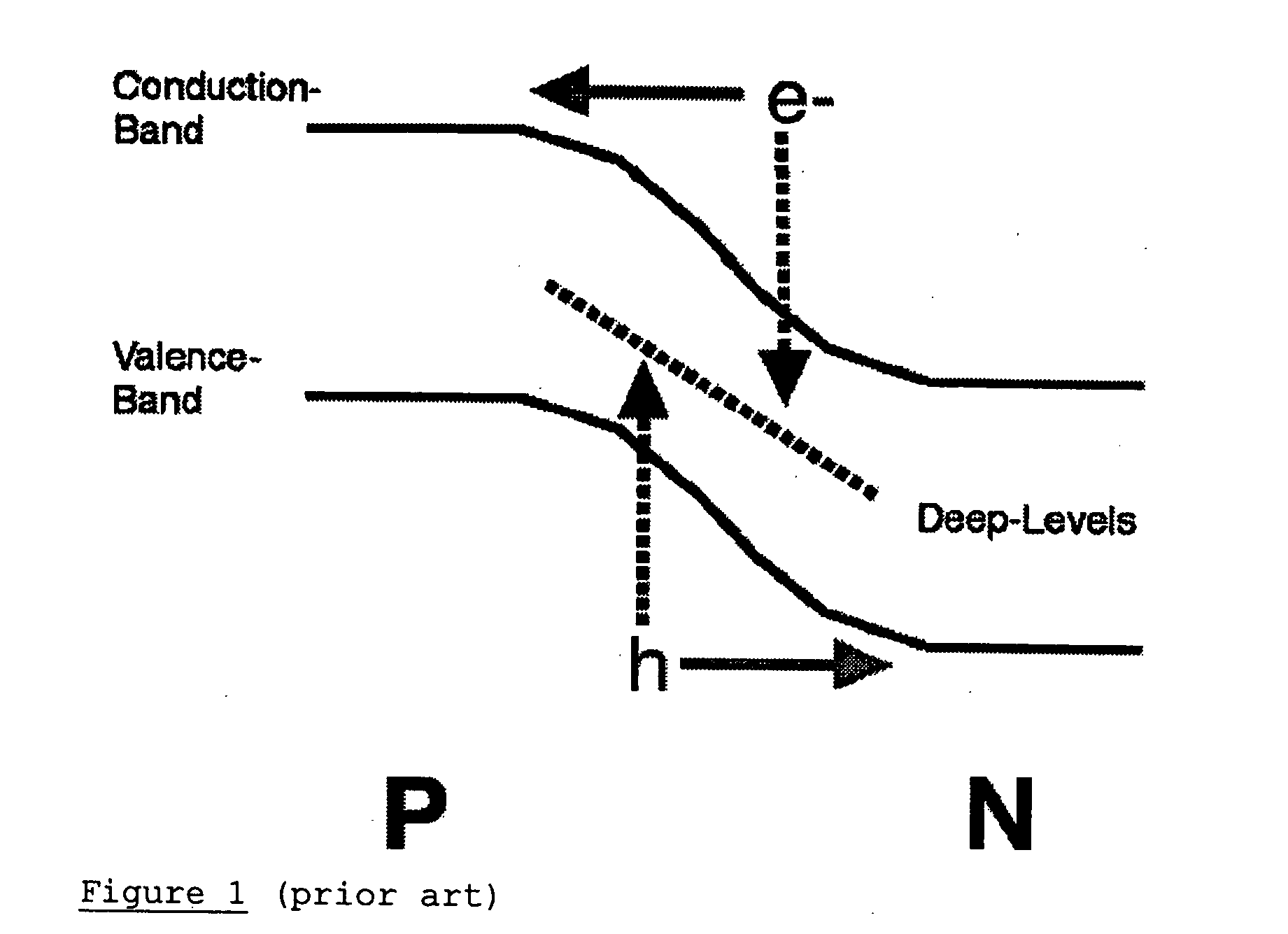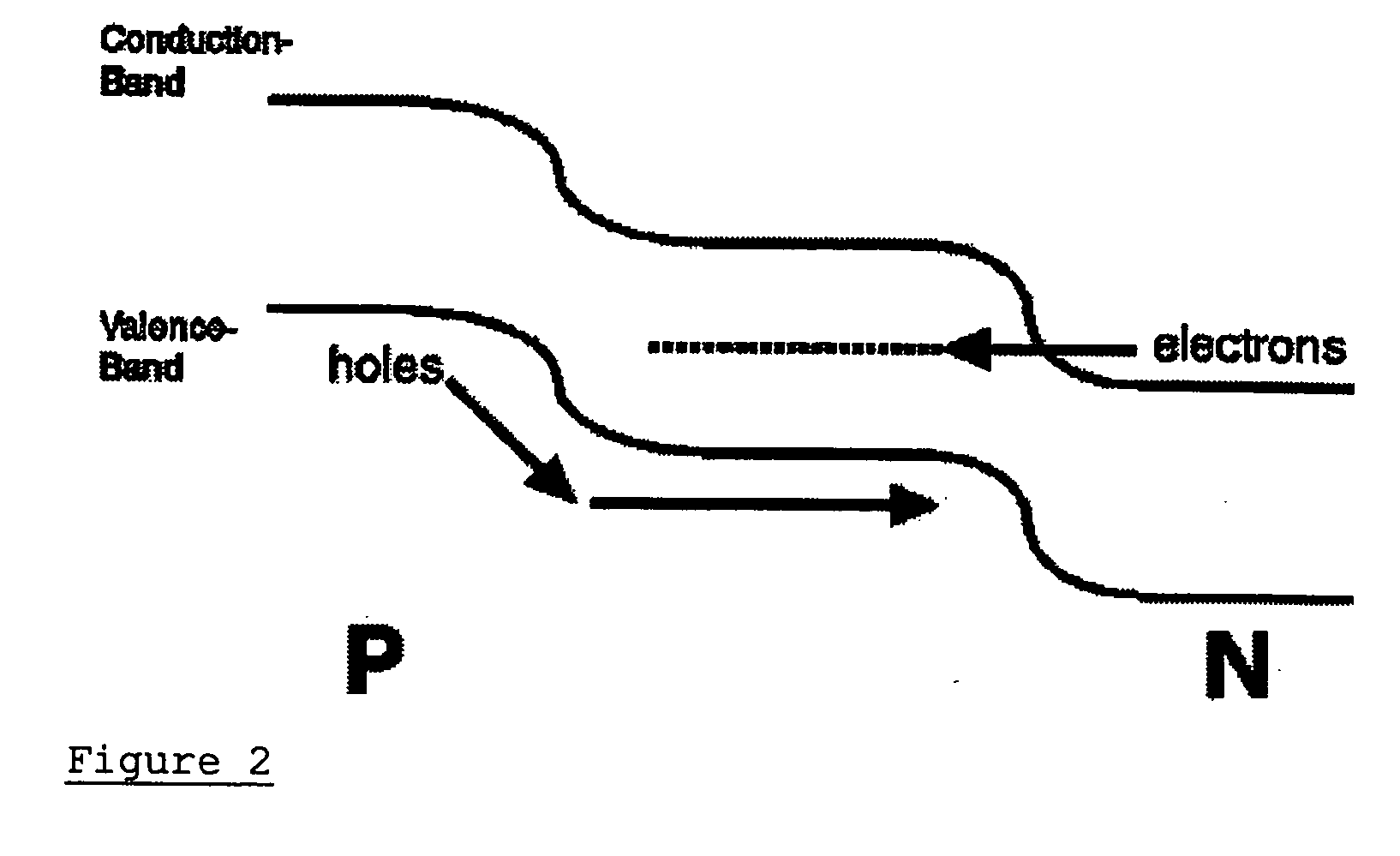Use of deep-level transitions in semiconductor devices
a technology of semiconductor devices and transitions, applied in semiconductor lasers, solid-state devices, semiconductor lasers, etc., can solve the problems of insufficient integration of inp circuits, high cost, and inability to achieve a level of device integration, so as to enhance carrier transport, enhance carrier transport, and enhance carrier transport
- Summary
- Abstract
- Description
- Claims
- Application Information
AI Technical Summary
Benefits of technology
Problems solved by technology
Method used
Image
Examples
Embodiment Construction
Conventional behavior is illustrated in FIG. 1. In a conventional p-n junction, electron transport occurs through the conduction band, and hole transport occurs through the valence band. (This transport through a conventional p-n junction is indicated by the solid arrows.) In a conventional p-n junction, deep-levels act as nonradiative recombination centers. (This is indicated by the dotted arrows, which show the trapping by deep-levels of electrons from the conduction band and holes from the valence band.)
FIG. 2 shows a band diagram for an exemplary deep-level optical emitter. In this device, an optical transition occurs between the deep-level (indicated by the dashed line) and the valence-band. Electrons are injected into the deep-level from the n-type region, whereas holes are injected from the p-type region into the optically-active central region.
In FIG. 3, the efficiency of the deep-level optical emitter is improved through the addition of a Schottky contact carrier-inject...
PUM
| Property | Measurement | Unit |
|---|---|---|
| valence-band energy | aaaaa | aaaaa |
| conduction-band energy | aaaaa | aaaaa |
| energy gap | aaaaa | aaaaa |
Abstract
Description
Claims
Application Information
 Login to View More
Login to View More - R&D
- Intellectual Property
- Life Sciences
- Materials
- Tech Scout
- Unparalleled Data Quality
- Higher Quality Content
- 60% Fewer Hallucinations
Browse by: Latest US Patents, China's latest patents, Technical Efficacy Thesaurus, Application Domain, Technology Topic, Popular Technical Reports.
© 2025 PatSnap. All rights reserved.Legal|Privacy policy|Modern Slavery Act Transparency Statement|Sitemap|About US| Contact US: help@patsnap.com



